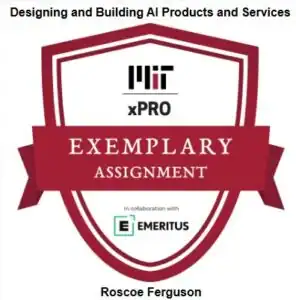
Network Logic Programming Theory
A copyrighted data processing system for separating complex programming algorithms into networks and computations.
Programs are becoming Complex Systems
Intent of CPU
- EThe original intent of CPU Programming was for computations.
- EPrograms became more complex as programming evolved from computations.
Hard to Manage
- EComplexity is hard to understand when represented as source code in traditional programming representation.
- ETotally unrecognizable after translation into assembly or machine language.
- EChallenge increases with program size and variability in styles of programmers.
Challenge to Maintain
- EDuring maintenance, challenge to understand hidden dependencies or tribal knowledge after departure of original programmers.
- EDocumentation typically becomes out of sync with source over time.
This book introduces Network Logic Programming Theory, which tackles programming’s challenges with a technique that separates complex programming algorithms into networks and computations (U.S. Patent 12,131,160 and Patent Pending). Networks store logic in the form of relationships to make decisions, while computations are reduced to simple algorithms. This network-based system utilizes the principles of network science to analyze complexity within software systems. AI and Network Logic Programming Theory are based on the concept of relationships and their derivates. The difference is AI extracts relationships from data using networks, while Network Logic Programming Theory programs networks using relationship-based abstraction. Such an approach can serve as the next evolution of programming, and be integrated with AI to create deterministic systems. Networks become a new version of assembly language and can store both static and dynamic information for data processing algorithms.
The use of network logic makes it more natural to open the door for concepts such as runtime verification, true distributed logic processing systems (including network logic distributed across geographically dispersed locations), or more deterministic adaptive systems by providing generative logic paths. Generative logic paths allow for the runtime generation of logic using predefined relationships such as the capability of a GPS Application that calculates routes based on a predetermined set of streets and roads (relationships).
When coupled with AI, the opportunities are to use Network Logic Programming Theory to support deterministic decision making, use AI models that learn relationships from data to produce static graphs that define these relationships as input to Network Logic Programming Theory network programs, and have AI generate systems using Network Logic Programming Theory so the generated complexity can be understood using Network Science technology. All in the name of supporting deterministic systems.
Network Logic Programming Theory introduces the concept of the Network Processor. The Network Processor is designed to process network flow logic for static logic paths defined in network definitions. It can also generate new paths dynamically during run time based on stored relationships. It can respond to queries during runtime about how items are related similar in concept to the query capability of a graph database such as Neo4j using cypher. The Network Processor and CPU work together to support the data processing model.
Paradigm
Platform
- ETheory to establish principles of programming
- ETools
- ENetwork Programming Support Tools
- ENetwork Analysis Tools
- ENetwork Compiler
- ENetwork and CPU Integration Tools
- ECPU Software Infrastructure
- ESmall Software Infrastructure to incorporate Network Infrastructure into CPU Platforms
- ENetwork Platform
- ESimulator
- EIP for Hardware (FPGA) first target
- ESimulator
- ERuns network processing on CPU
- EIP
- EDigital Design to run network processing on FPGA or ASIC
- EWorks with CPU. CPU performs computations
Why Choose Intellect Logic Systems?
Here are some reasons you can depend on Intellect Logic Systems to meet your needs:
We do things right.
We aim higher.
We challenge the accepted.
We are passionate about our business.
We love success.
We are reliable.
We act with integrity.
We show respect.
We are accountable.
We have the humility and hunger to learn.
We strive for simplicity.
GSA Contract Holder
THE AI BASED PROGRAMMING COMPANY
DESIGNING INTELLIGENCE YOU CAN TRUST
Intellect Logic Systems LLC provides custom design and programming services for embedded systems. Our team members have extensive experience from both Human Rated Space and Military Programs. We also have experience in Commercial Programs and non-embedded system platforms which includes support for database, data analytics, and machine learning.
Company Info
Intellect Logic Systems
4265 San Felipe Street, Suite 1100
Houston, Texas 77027
Phone: (713) 554-0684
Email: info@intellect-ls.com
Monday-Friday: 8 AM to 5 PM
Weekends: Closed
CONTRACTOR INFO
CAGE Code: 9FPN1
SAM UEI: EGM2BLBNJEB5
GSA Contract Number: 47QTCA23D003E
NAICS: 541511 Custom Computer Programming Services
QUICK LINKS






